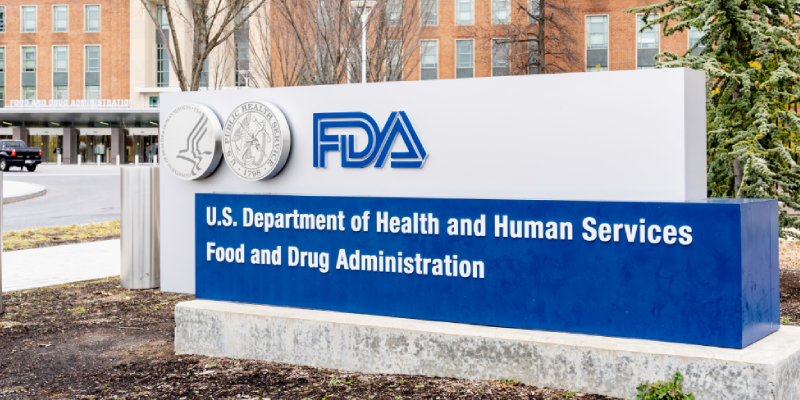
Approximately 26 million adults in the United States are affected by chronic kidney disease (CKD). The risk of CKD and progression to end-stage kidney disease (ESKD) is higher among those of African ancestry compared with those of European ancestry due in part to social determinants, clinical factors, and health system factors. Social constructs include race and ethnicity; ancestry has some biologic underpinnings.
High-risk genotypes at the apolipoprotein L1 (APOL1 ) locus confer a 5-fold to 10-fold increased risk for CKD and ESKD attributed to hypertension; the risk increment is attenuated among individuals with diabetes. High-risk variants of APOL1 (OMIM 603734) on chromosome 22 are found in one in 17 people of African ancestry but are nearly absent in people of European ancestry.
Of late, interest in incorporating genetic testing into primary care has increased. The APOL1 risk genotype is common and carries high risk for CKD in individuals of African ancestry who are disproportionally burdened by chronic diseases, creating a need for the incorporation of genetic testing into clinical care. Kidney function deterioration can be reduced with blood pressure control, but those of African ancestry have the highest age-adjusted prevalence of hypertension and the lowest rates of blood pressure control. Further, tests of kidney function are underused among patients at high risk for CKD.
There are few data available on whether disclosure of results of APOL1 genetic testing to patients of African ancestry and their clinicians affects blood pressure, screening for kidney disease, or patient behavior. Girish N. Nadkami, MD, MPH, and colleagues conducted a pragmatic randomized clinical trial to examine the effects of testing and disclosing APOL1 genetic results to patients of African ancestry with hypertension and their clinicians. Results were reported online in JAMA Network Open [doi:10.1001/jamanetworkopen.2022.1048].
The trial included adults of African ancestry with hypertension and without existing CKD in two healthcare systems in the United States from November 1, 2014, through November 28, 1016. Follow-up continued until January 16, 2018. Patients were randomly assigned to undergo immediate (intervention) or delayed (waiting list control group) APOL1 testing in a 7:1 ratio. Statistical analyses were performed from May 1, 2018, to July 31, 2020.
Patients in the intervention group received APOL1 genetic testing from trained staff. Their clinicians received results through clinical decision support in electronic health records (EHRs). Patients in the waiting list control group received results following their 12-month follow-up visit. The primary outcomes of interest were the change in 3-month systolic blood pressure and 12-month urine kidney disease screening comparing intervention patients with high-risk APOL1 genotypes and those with low-risk APOL1 genotypes. Secondary outcomes included comparison of those outcomes between patients in the intervention group with high-risk APOL1 genotypes and those in the control group. Psychobehavioral factors were also analyzed.
During the enrollment period November 1, 2014, to November 20, 2016, 5481 patients identified in EHR queries were approached. Of those, 2052 were enrolled, 2783 were ineligible, 243 declined, and 412 were undecided at the end of the enrollment period. Of the 2052 enrolled, all but two were randomized. Mean age of participants was 53 years, 66% were women (1360/2050), 50% had very low income (1014/2050), 38% had low health literacy (769/2050), and 26% had very good or excellent self-rated health (530/2050).
At 3 months, 92% of participants remained in the study (1881/2050); 77% remained at 12 months (1587/2020). There were no differences between the two study groups in follow-up rates. The two groups were similar in sociodemographic characteristics with exception of higher educational attainment in the control group (more than some college: 64% [162/255) control patients vs 56% [1010/1975] intervention patients. Patients with high-risk APOL1 genotypes had significantly higher mean systolic blood pressure at baseline (137 mm Hg) than those with low-risk genotypes (134 mm Hg; P=.003) and controls (133 mm Hg; P=.001).
All groups had some decreases in systolic blood pressure. It was greatest in patients with high-risk APOL1 genotypes (mean, 6 mm Hg) compared with those with low-risk APOL1 genotypes (mean, 3 mm Hg; P=.004) or controls (mean, 3 mm Hg; P=.01). The percentage change in systolic blood pressure was significantly different between patients with high-risk APOL1 genotypes (3.6%), those with low-risk APOL1 genotypes (1.0%; P=.003), and controls (1.3%; P=.04).
Following adjustment for age, sex, body mass index, comorbidity, education level, and marital status, the decrease in systolic blood pressure remained statistically significant between patients with high-risk APOL1 genotypes and those with low-risk APOL1 genotypes.
All three groups had protein excretion tests at baseline in similar proportions. At 12 months after the intervention, all three groups had a significant increase in the rate of urine protein testing over time. Patients with high-risk APLO1 genotypes had the most significant increase (12% increase; from 39 of 234 [17%] to 68 of 243 [29%]) compared with those with low-risk APOL1 genotypes (6% increase; from 278 of 1561 [18%] to 377 of 1561 [24%]) and controls (7% increase; from 33 of 255 [13%] to 50 of 255 [20%]). The difference was significant between patients with high-risk APOL1 genotypes and controls (P=.01). Over time across groups, the difference did not remain statistically significant.
In response to testing, patients in the high-risk APOL1 genotype group reported more changes in lifestyle (a subjective measure that included better dietary and exercise habits): 59% compared with 37% in the group with low-risk APOL1 genotypes. Patients in the high-risk APOL1 genotype group also reported greater increased use of blood pressure mediation than those in the low-risk APOL1 genotype group (10% vs 5%).
The authors cited some limitations to the study findings, including exclusion of patients with CKD, the modest effect size, the lack of comprehensive data on lifestyle and dietary intake or medication refill, and conducting the study in only one urban area.
In conclusion, the researchers said, “Return of APOL1 genetic testing results combined with EHR-based clinical decision support and disclosure of results to patients using laypersons improved systolic blood pressure control and increased guideline-appropriate kidney function testing. These results may support an approach of broad implementation of genetic medicine in primary care. This broad implementation will benefit racial and ethnic minority groups that have been traditionally under-represented in both clinical trials and genetic studies. Because it is imperative not to overlook the importance of social determinants of health in affecting chronic disease, it will also be important to understand and address the intersection of social and biological determinants in patient health.”
Takeaway Points
- Results of a pragmatic randomized clinical trial designed to examine the effects of testing and disclosing APOL1 genetic results to patients of African ancestry with hypertension and their clinicians.
- Patients were randomized to receive immediate (intervention) or delayed (control) APLO1 testing results. Patients in the immediate results group received results from trained staff; those in the delayed group received results after a 12-month follow-up visit.
- Patients with high-risk APOL1 genotypes had greater improvement in blood pressure from baseline and more lifestyle changes than those with low-risk APOL1 genotypes or controls.







 © 2025 Mashup Media, LLC, a Formedics Property. All Rights Reserved.
© 2025 Mashup Media, LLC, a Formedics Property. All Rights Reserved.